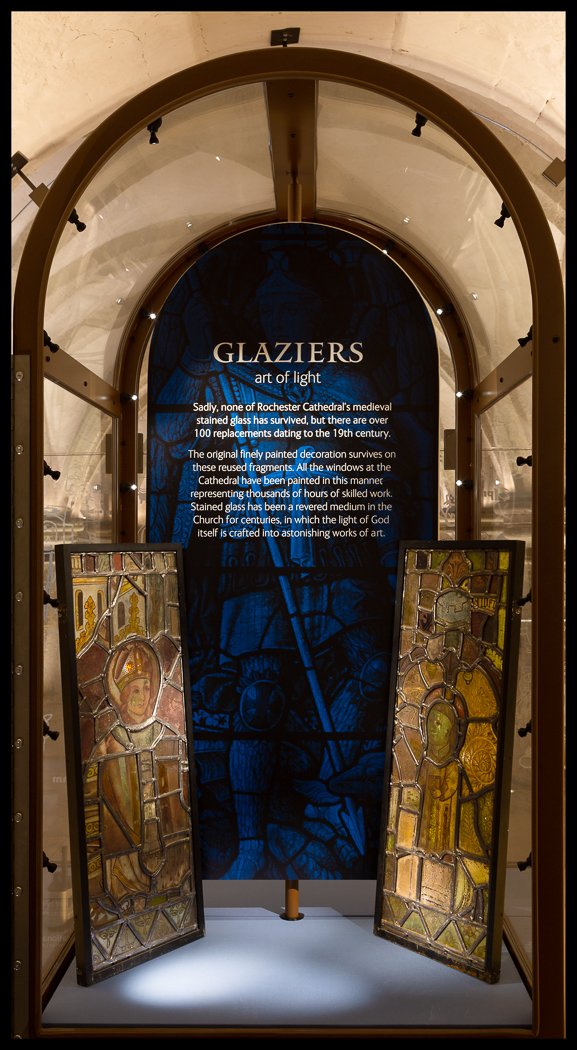Fragments of History
/In 2019 the Crypt hosted an exhibition of some of the finest sculptural fragments gathered from around the building over the last 200 years. The Fragments of History exhibition raised the profile of the little-known Lapidarium collection and many of the most superb examples are retained in the current Big History crypt exhibition.
The 50 stones in the exhibition are just some of the hundreds of stones in the cathedral Lapidarium collections. The genesis of the Lapidarium collection can be traced back to the tenure of Cathedral Architect Lewis N. Cottingham (1820-1825). Work was underway to restore the 15th-century Great West Window in the West Facade. A number of Romanesque Caen Stone sculptural decorations were removed from the spandrels; the areas either side of the top of the window. Several of the finest Romanesque fragments in the Lapidarium today can be traced through these sketches, although it is clear that some have since gone missing.
Other fragments were discovered over the course of Cottingham’s renovations to the cathedral in the 1820s. In 1825, a tomb was discovered blocked up with rubble comprised of fine sculptural fragments and a stunning effigy of Bishop John de Sheppey (1352-1360).
This material included several late-medieval stone fragments that are thought to originate from Bishop Sheppey’s Chantry Chapel.
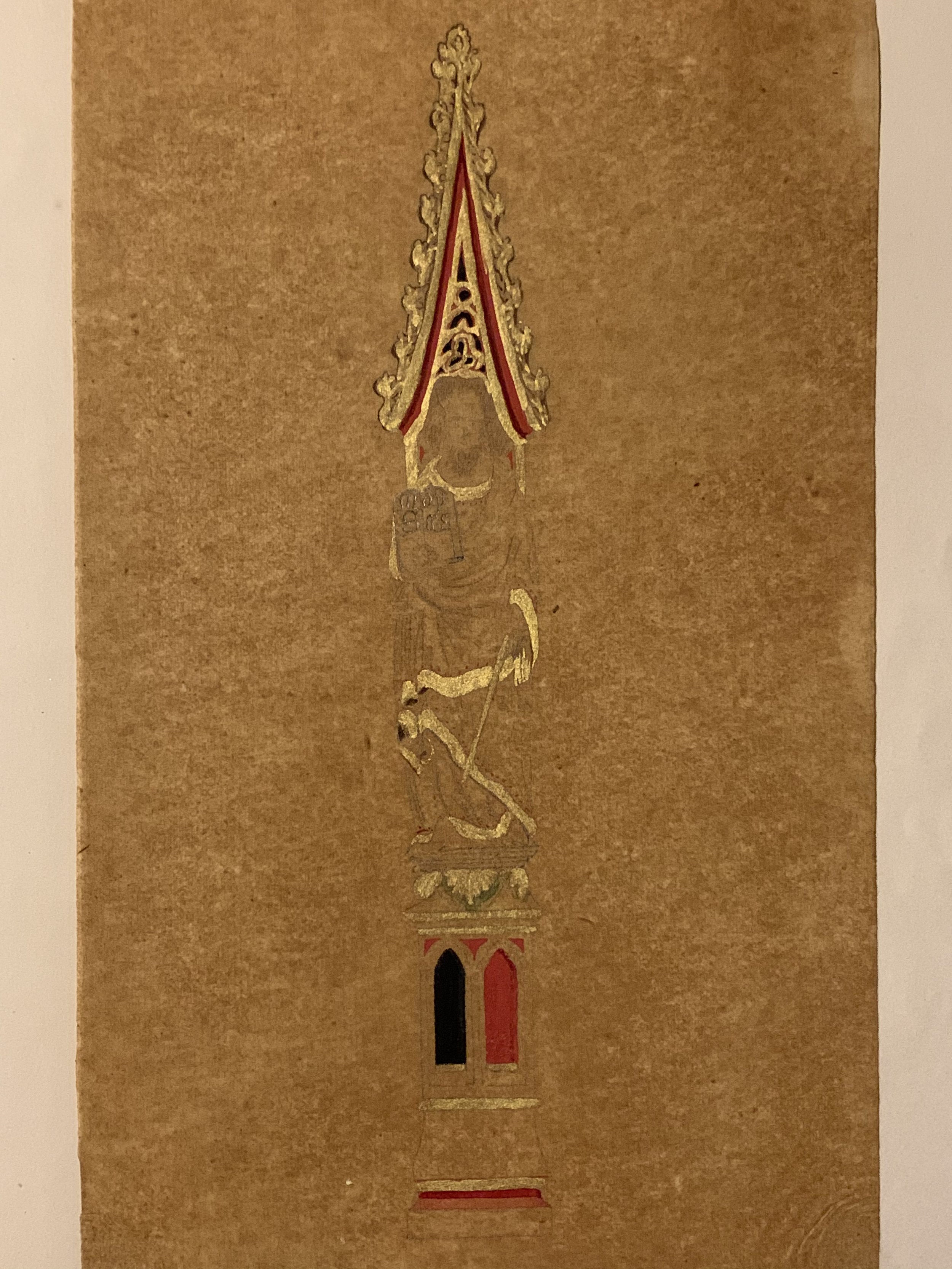
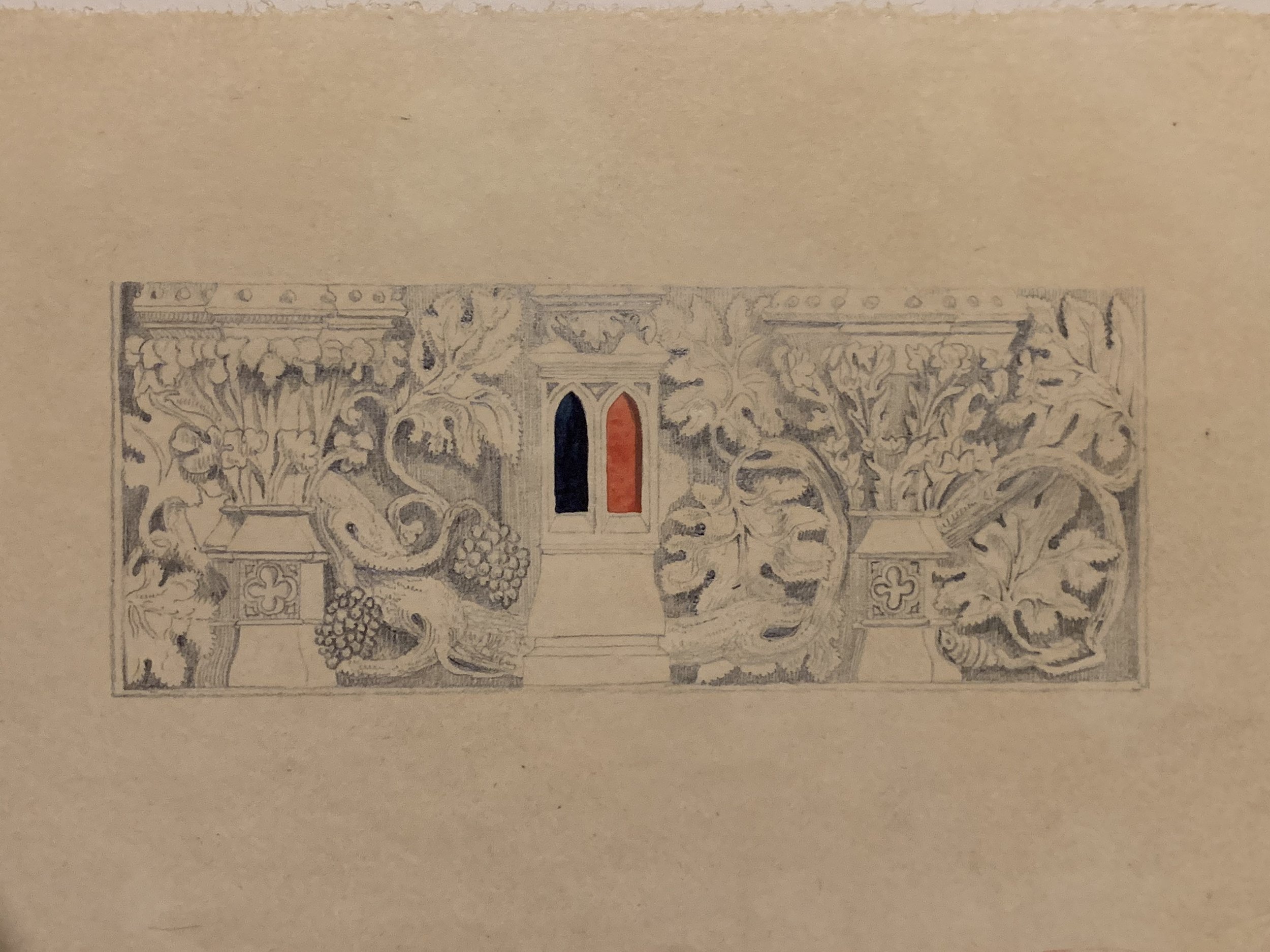
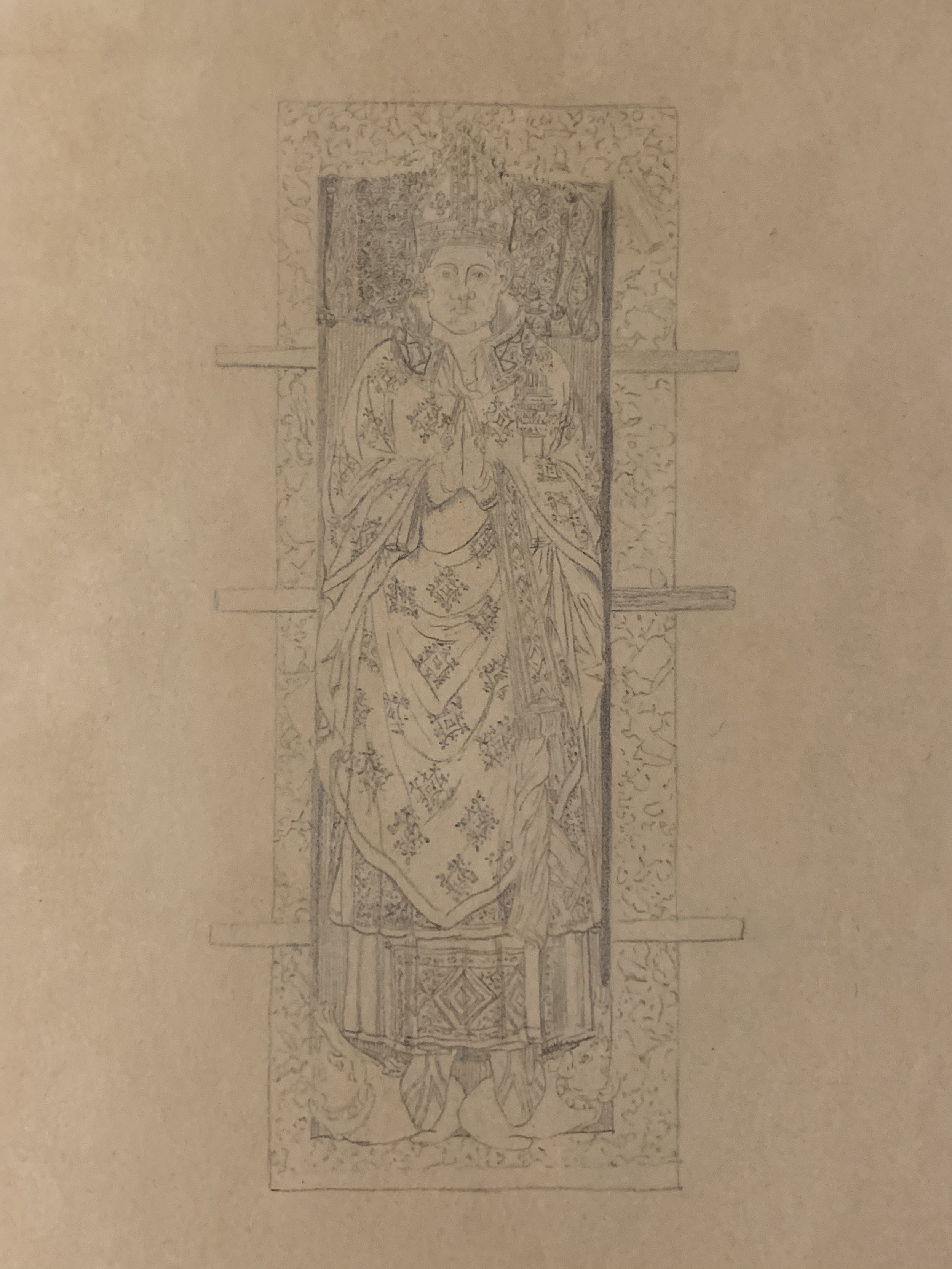
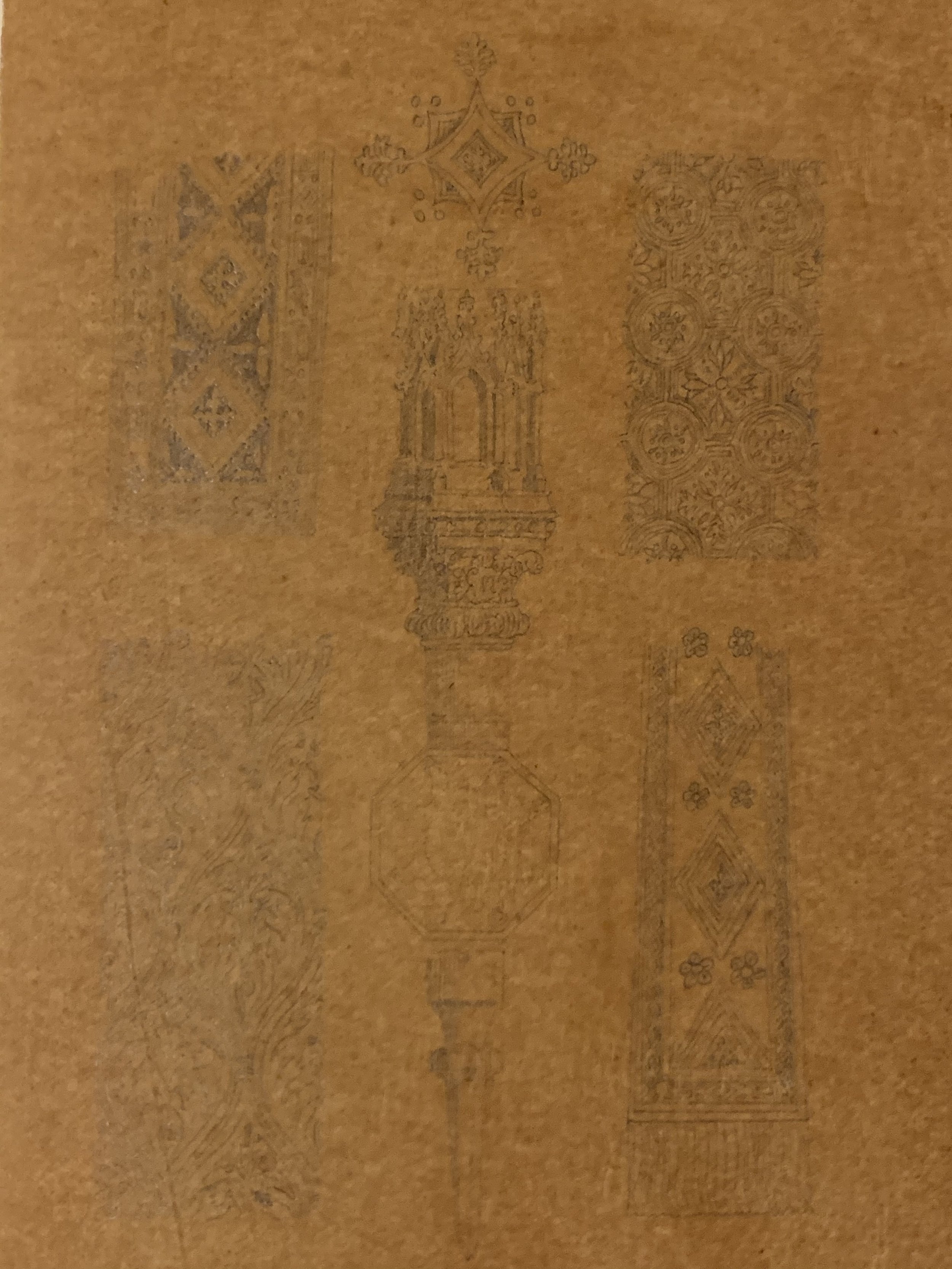
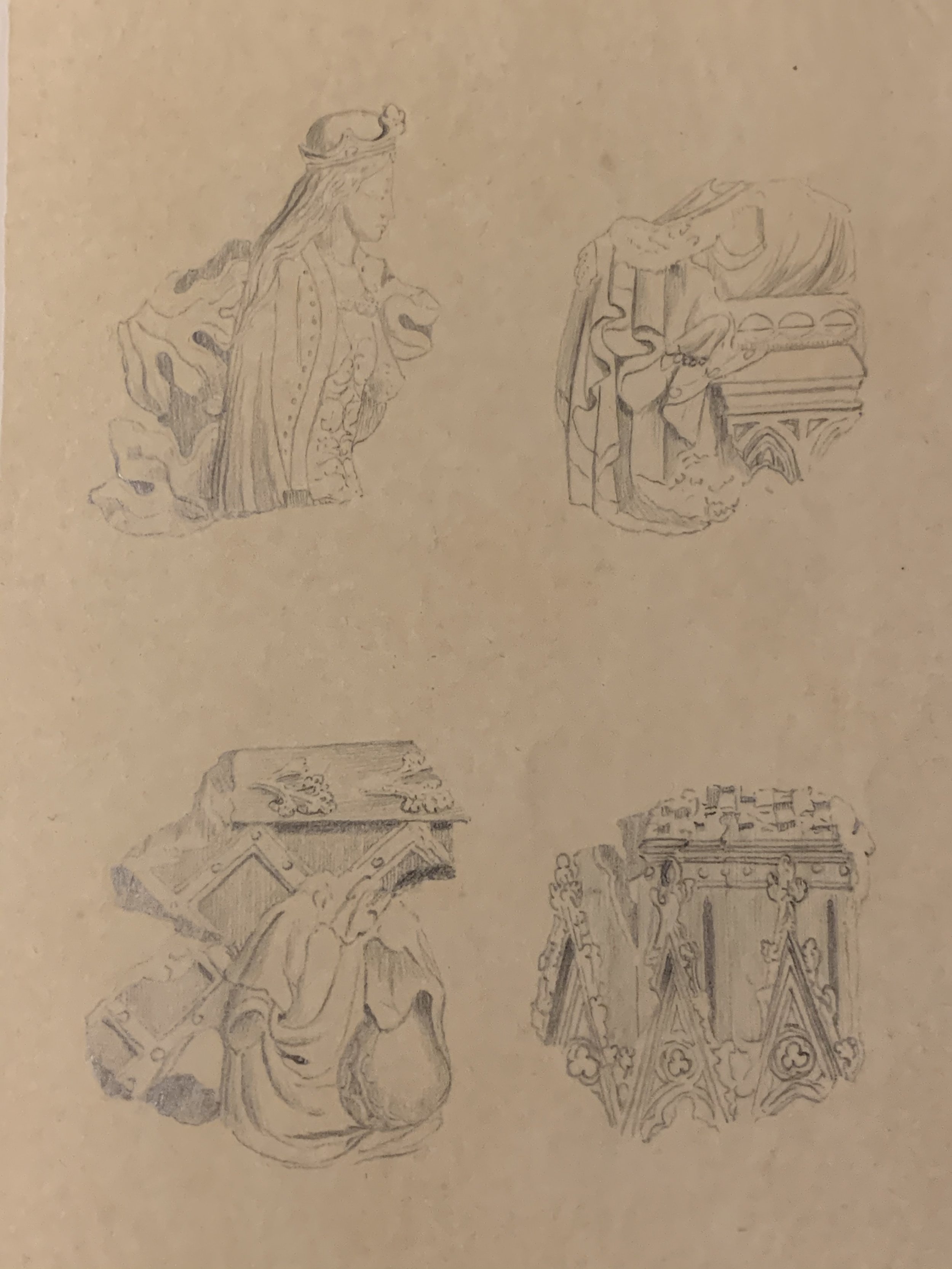
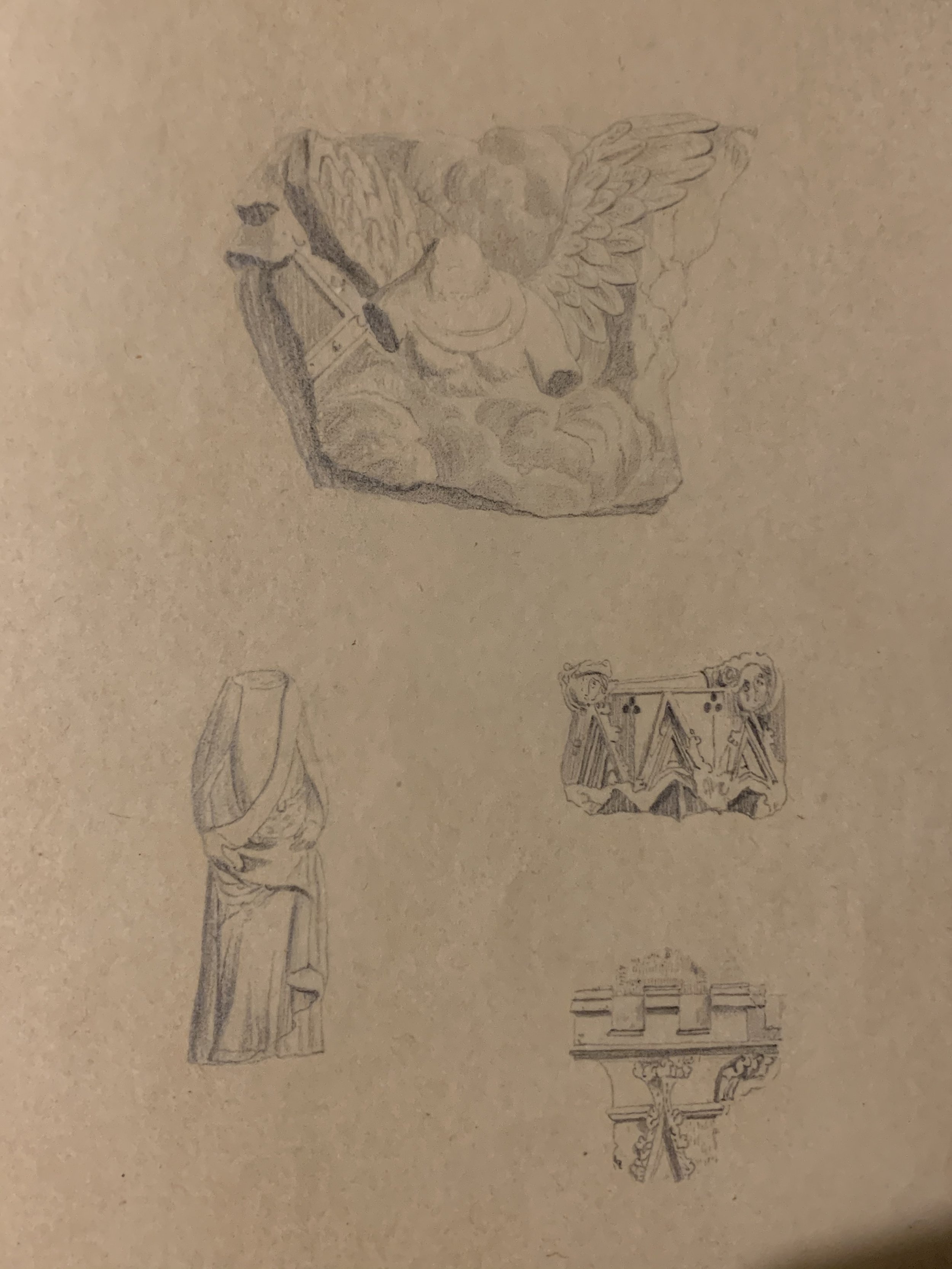
Various other elements of the west façade were restored in the later nineteenth century, many under the architect J. L. Pearson from 1888 to 1894. During underpinning of the west front in 1888/1889 four further pieces of fine sculpture were discovered – two Romanesque and two Anglo-Saxon.
Fragment A2533, amongst the handful of Pre-Conquest sculptural fragments recovered from the vicinity of the Cathedral. Find out more in Anglo-Saxon stones?
By 1898, William St John Hope noted:
‘In the vault beneath the chapter-room are deposited a large number of carved and moulded architectural fragments, some of considerable beauty and interest, that have been found from time to time at successive “restorations”. Until quite lately these were scattered about the crypt, but have now been reduced to some kind of order by the care of Mr George Payne, F.S.A. They have yet to be sorted and labelled, before all record of them is forgotten’ (Hope 1898, 135).
Stones and other historic bric-a-brac have slowly accumulated in the Lapidarium over the past 30 years, to the point that it is now difficult to navigate the small alleyways between the stones. Many fragments were discovered from the cloisters during the archaeological excavations and construction works in 2014 for the Hidden Treasures, Fresh Expressions project. Stones are routinely unearthed by the gardeners, or else found to have been reused as garden features at some point in the past. Today the collection comprises over 400 stones ranging in date from the eighth to the nineteenth centuries. In 2018 it was decided to move the stone contents of the Lapidarium to the room opposite this, above the South Quire Transept. This room offers more space for shelving and the more accessible room on the north could then be used to store archive material.
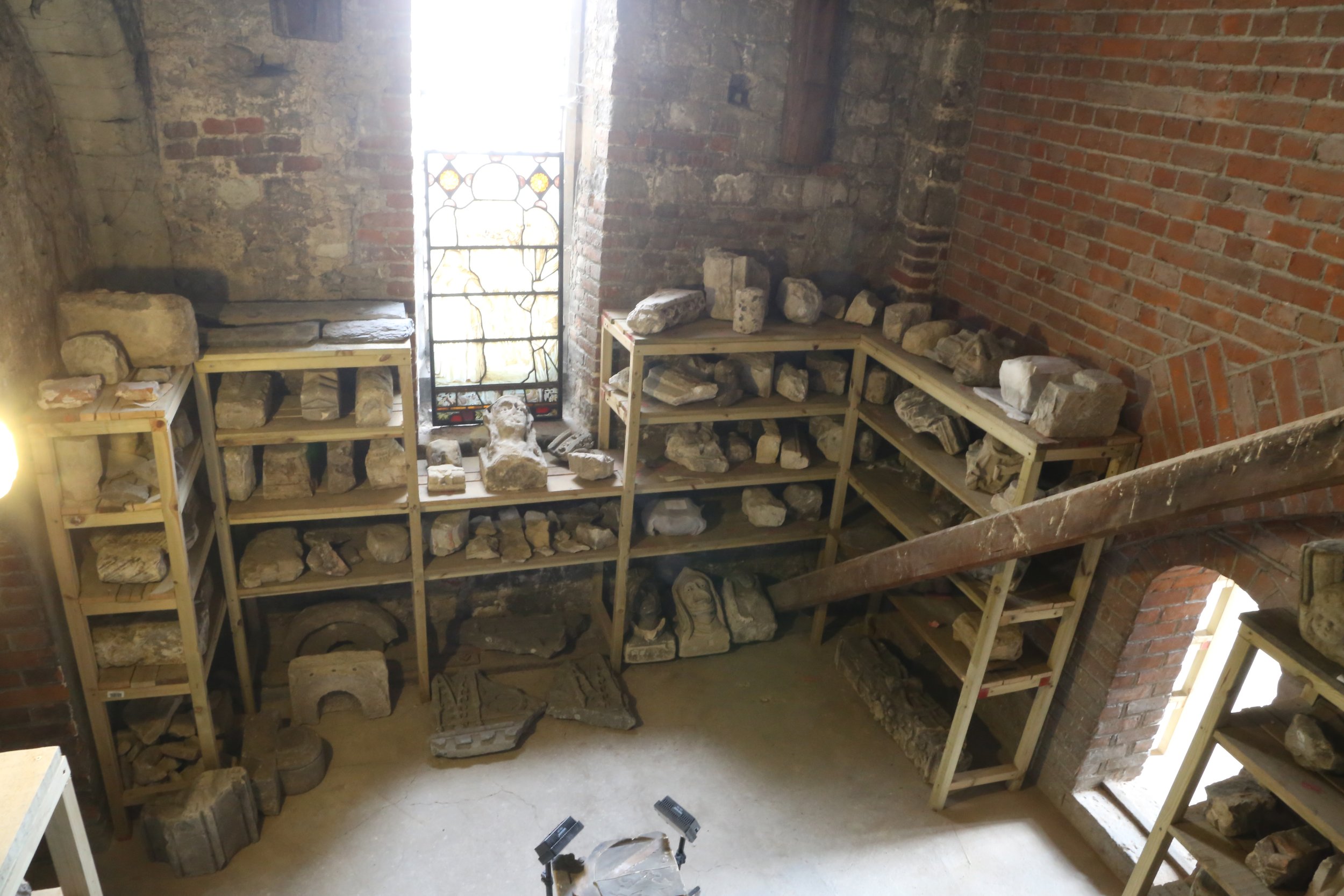
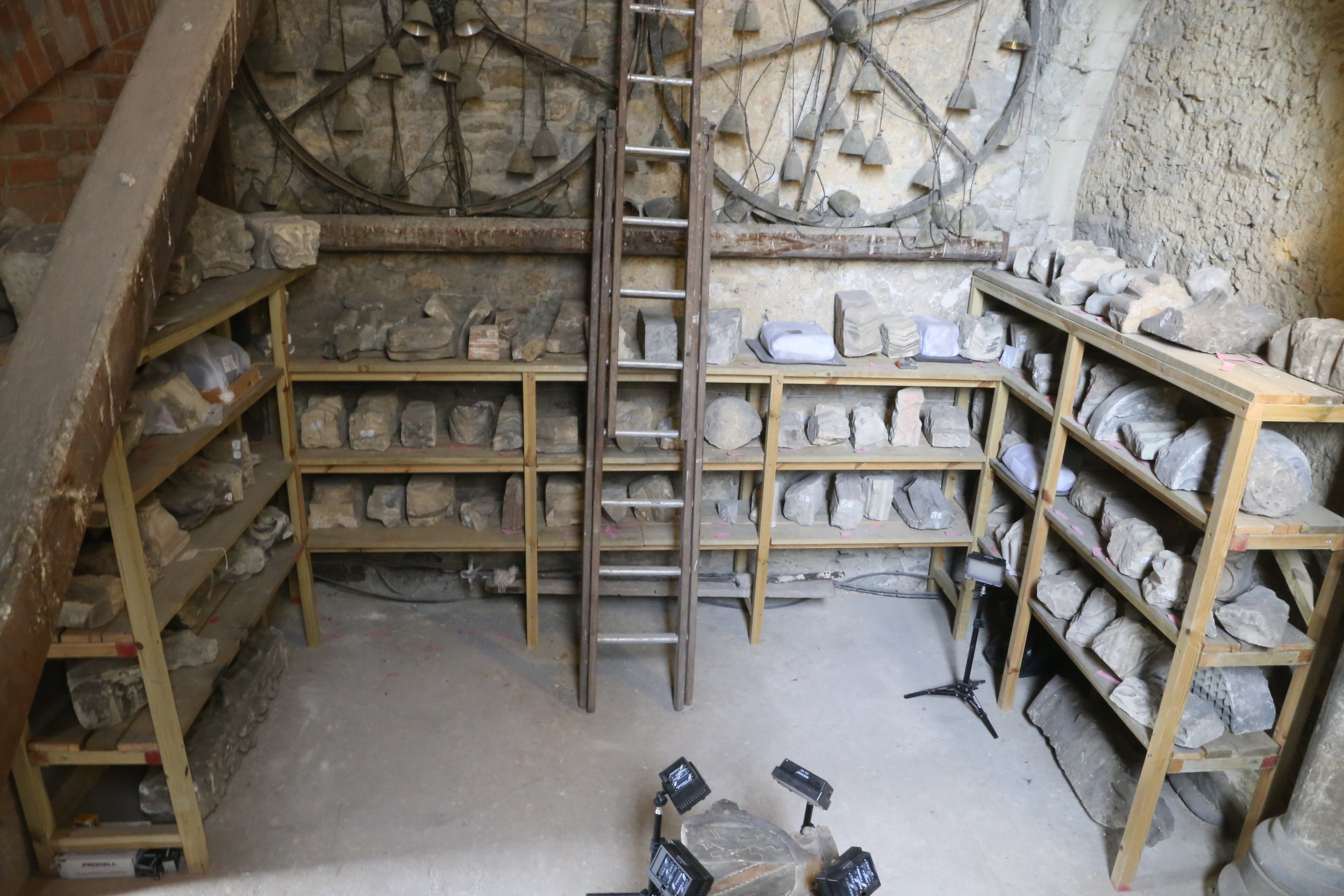
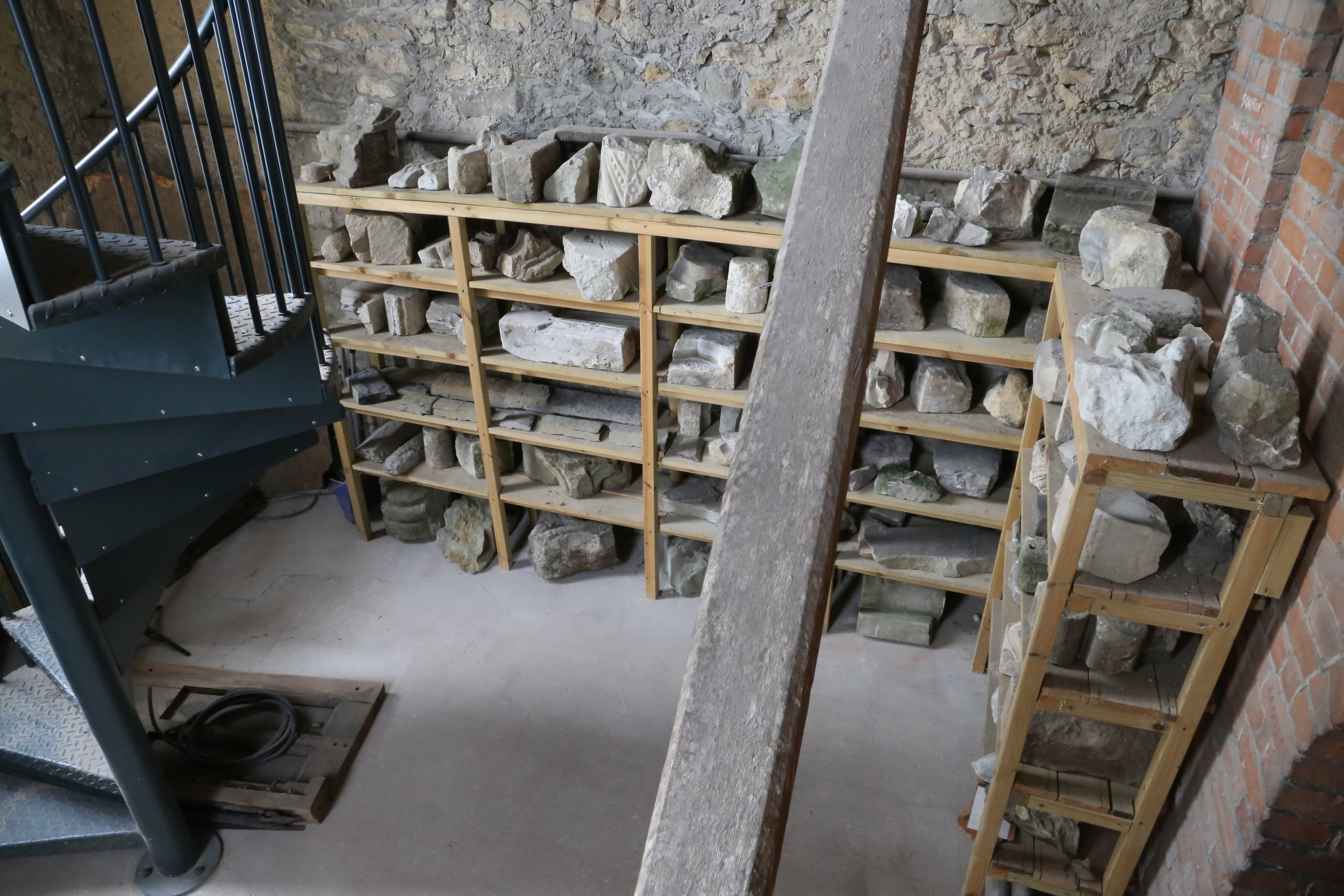
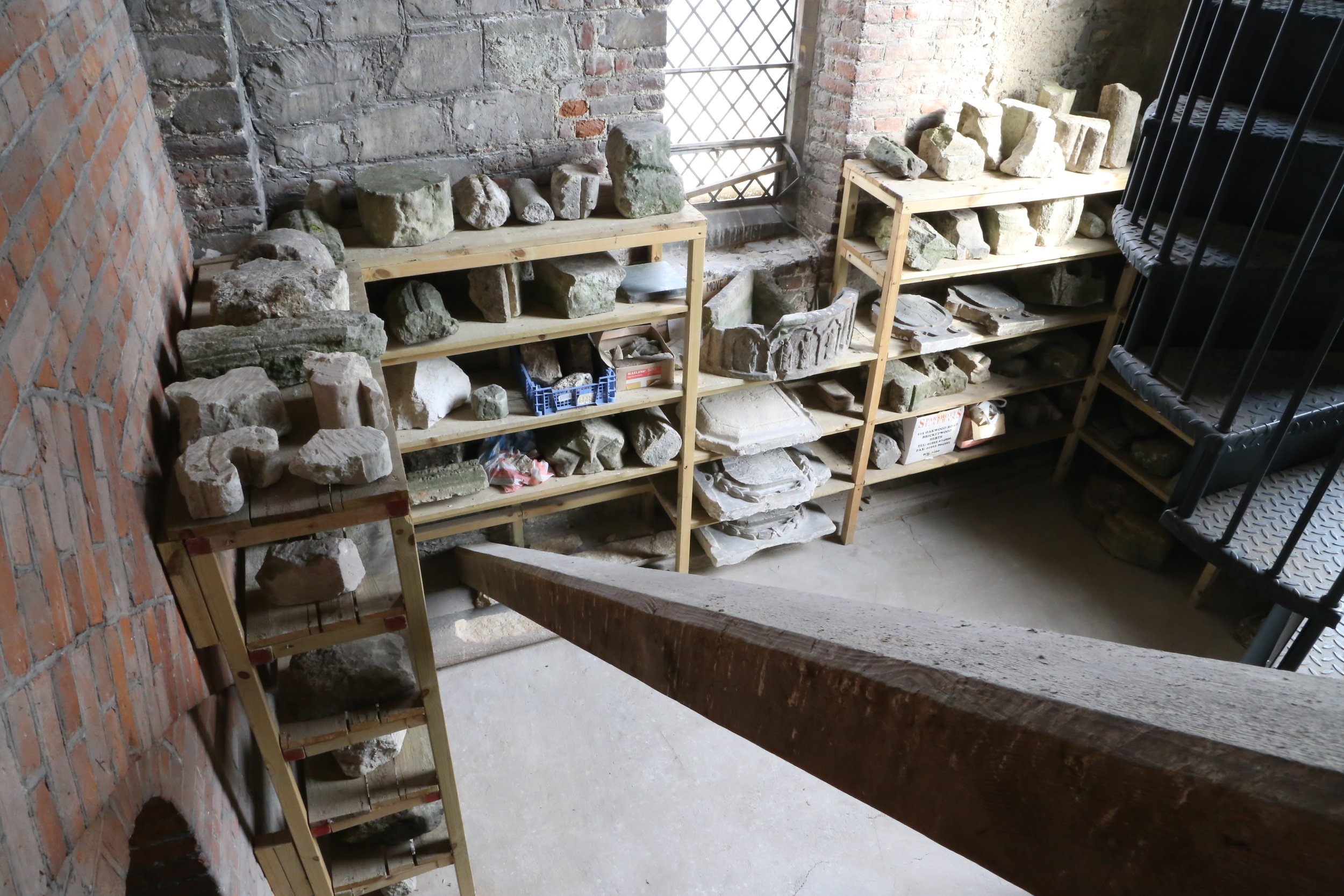

The exhibition also featured a presentation on recent researches at the cathedral that are providing the context to better understand these artefacts. The foundations of the east range of the Early Norman cloisters were discovered in a radar survey at the beginning of 2018. The form of the east end of the late eleventh-century building was confirmed in excavations in 2014. A virtual 3D model of the locations of over 4,000 twelfth and thirteenth-century masons’ marks was completed at the beginning of 2018. This extensive sequence has been used to understand the construction history of the building in the twelfth century.
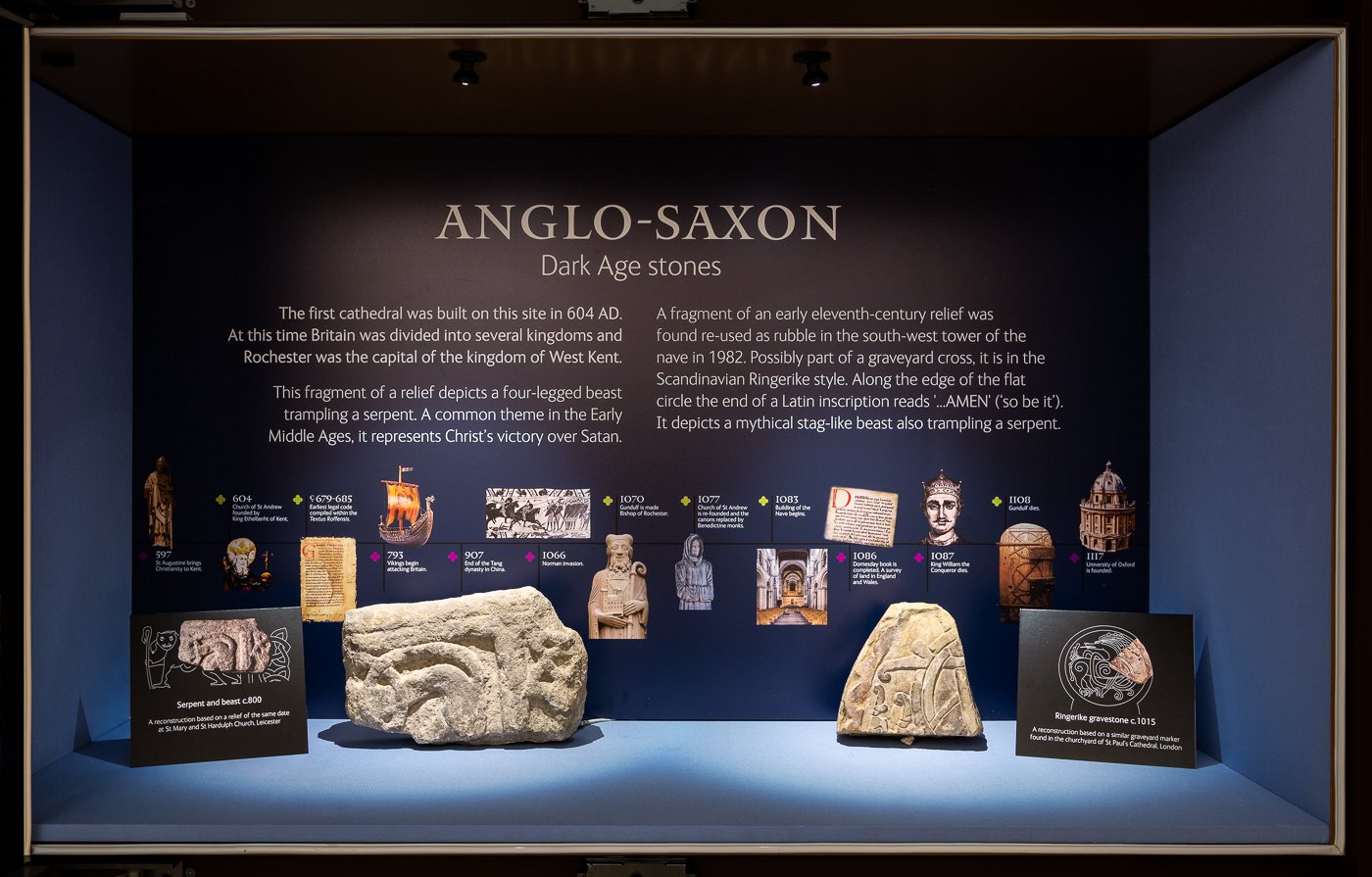
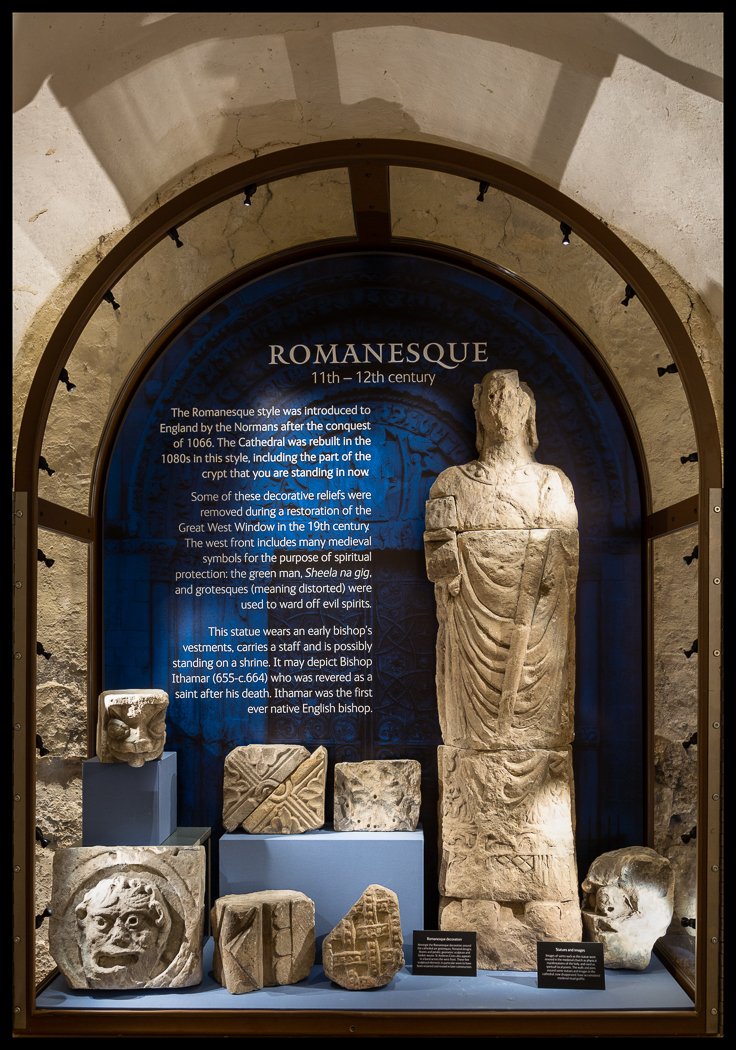
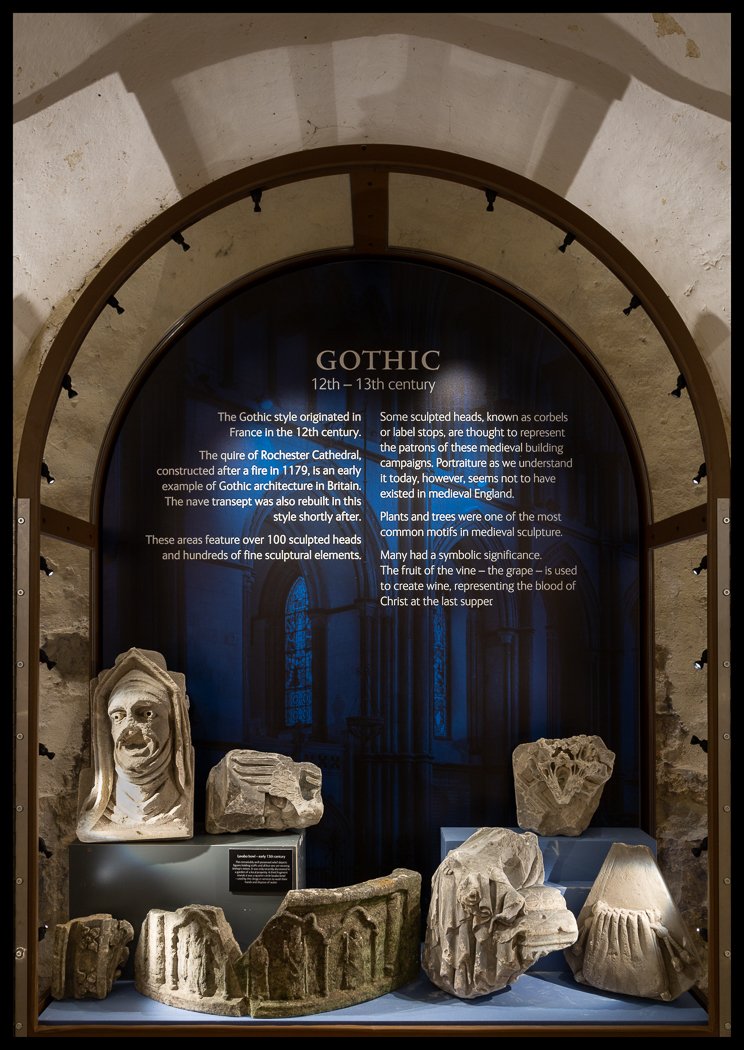
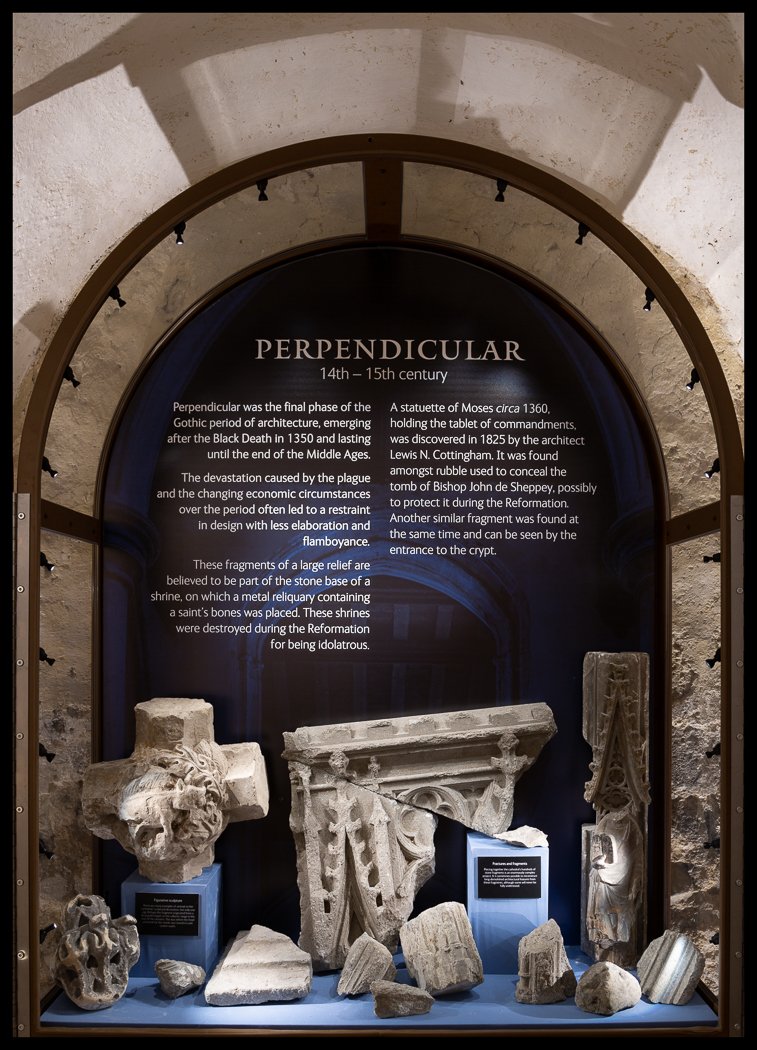

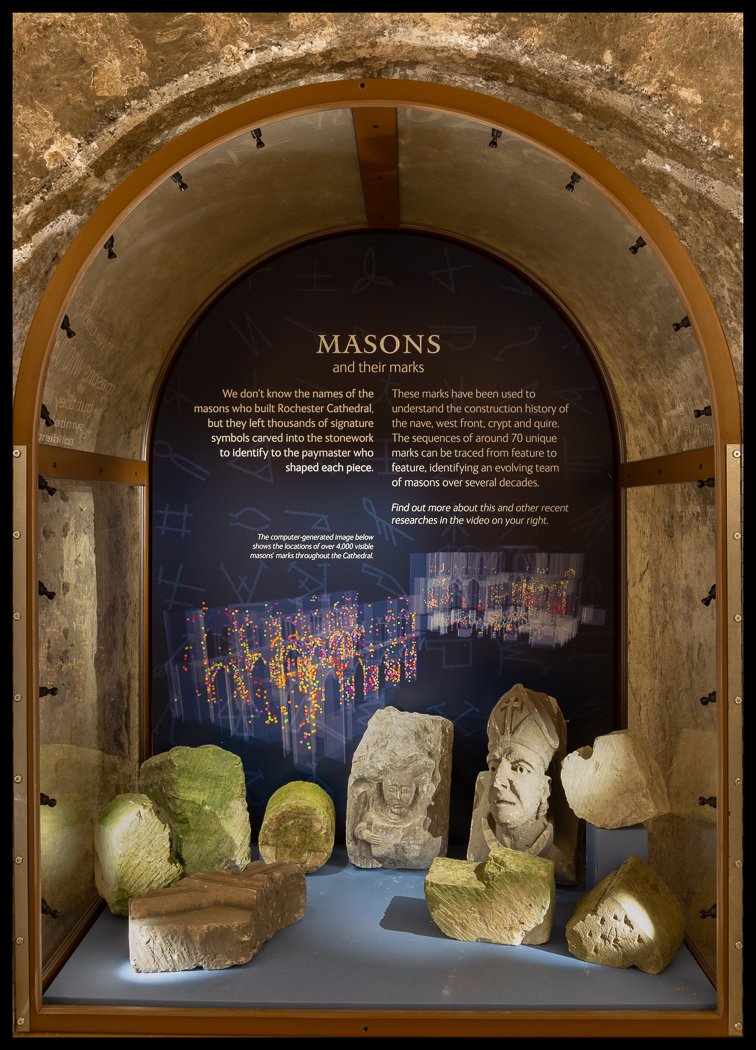

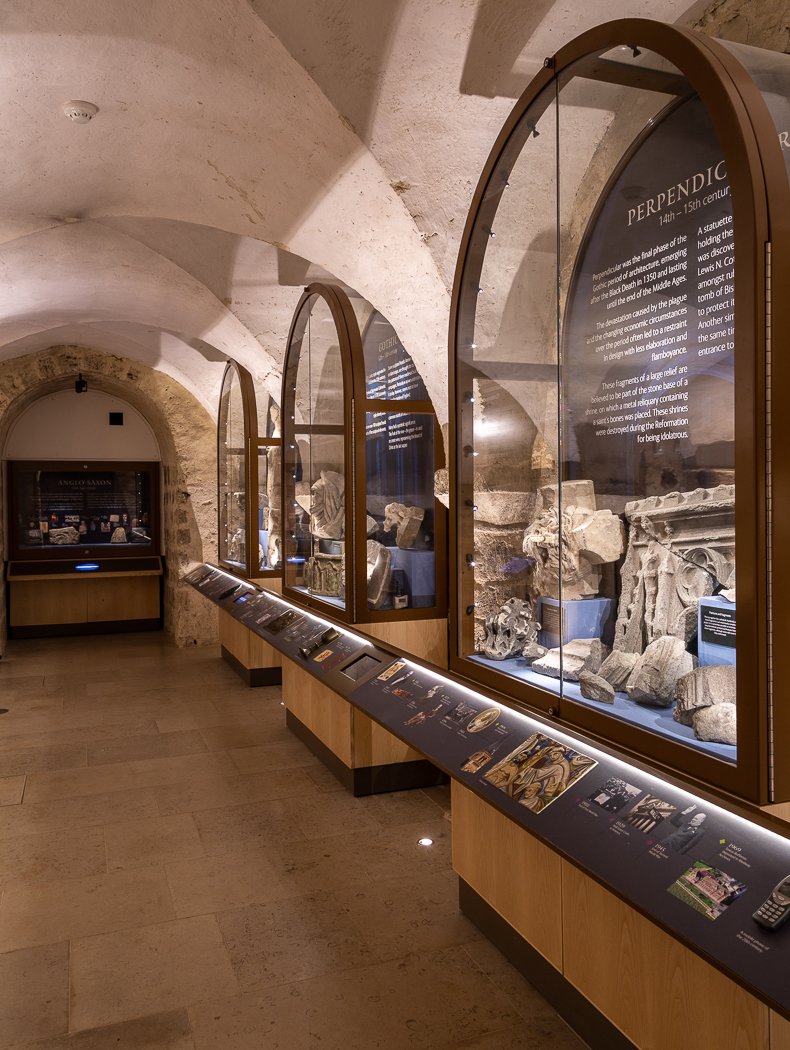
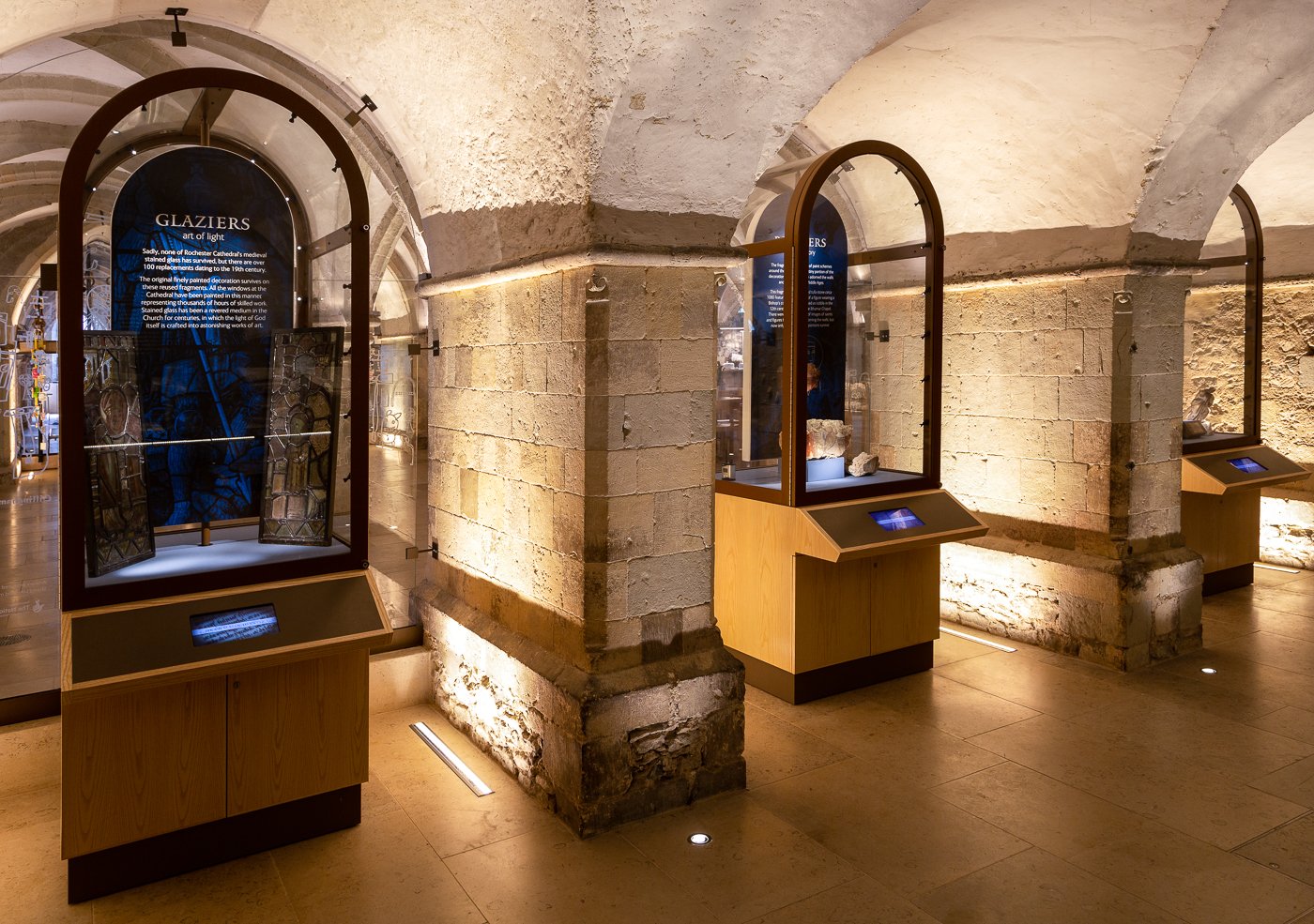
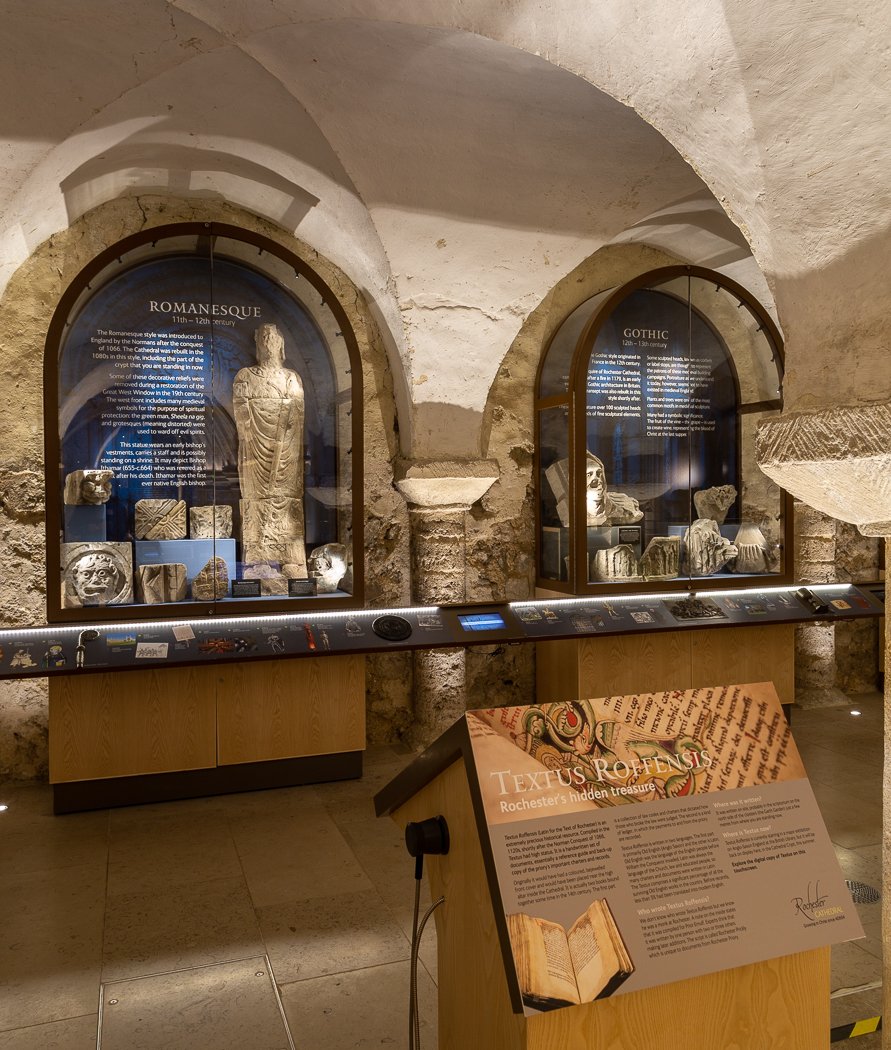
The Fragments of History exhibition closed in 2020 but many of the finest fragments have been retained in the current Big History exhibition. Fragments can now be viewed in the cases facing into the Crypt Cafe.
Jacob Scott
Exhibition curator
With thanks to Lesley Olley of Olley Design for graphic design and to Clive Tanner for exhibition photography.
The Cathedral hosts several large exhibitions and smaller installations each year from education to art and everything in between.





